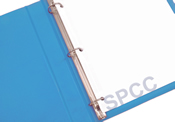
How do I develop a program for inspecting and/or testing my containers?
First, you, or a registered Professional Engineer (PE), determine which industry standards are applicable. Then, in accordance with the industry standards determine:
- The appropriate qualifications for personnel performing tests and inspections; and
- The frequency and type of testing and inspections. This must take into account the aboveground container size, configuration, and design (i.e., shop-built, field-erected, skid-mounted, elevated, equipped with a liner, double-walled, or partially buried).
EPA’s SPCC regulation affects over 630,000 facilities. Is yours one? Download your EHS Essentials Kit—SPCC Plan Compliance now for all the tools you need to be in compliance. Download Now
Industry standards describe procedures to identify the condition of the container through formal internal and external inspections conducted by certified personnel. For internal inspections, the container must typically be taken out of service, cleaned, and made ready for personnel to enter the container. Examples of these integrity tests include, but are not limited to:
- Visual inspection;
- Radiographic examination;
- UT;
- MFL scanning;
- Helium leak testing;
- Magnetic particle examination;
- Liquid penetrant examination;
- Acoustic emissions testing;
- Hydrostatic testing;
- Inert gas leak testing; or,
- Other methods of non-destructive examination.
Acoustic emission testing and UT robotic measurement are non-destructive examination methods that can be used while the tank is in-service. Acoustic emission testing is used to determine if there is a leak but does not determine if there is corrosion or metal loss. Hydrostatic testing is typically performed on new tanks and on existing tanks that have had major repairs or alterations. Industry standards may use one, or a combination, of these non-destructive examination methods or tests as part of an integrity testing program.
If you have containers that have never been inspected for integrity then, depending on their size and configuration, industry standards may require that you assess baseline conditions for these containers.
The industry standard you or your PE identifies in your SPCC Plan outlines the specific inspection and integrity testing protocol for the containers at your facility. These protocols may vary depending on the size and configuration of your containers. For example, portable containers (e.g. a drum) have fewer inspection requirements than shop-built and field-erected containers.
Don’t risk an EPA fine! Stay in compliance with our EHS Essentials Kit—SPCC Plan Compliance. Download now for instant access to comprehensive checklists, common violations, training materials, forms, and more. Download Now
Keeping the Right Records for SPCC
The facility integrity testing and inspection program must be documented in your SPCC plan, including the schedule for conducting inspections and tests. The SPCC rule requires that you keep a record of the inspections and tests, signed by the appropriate supervisor or inspector, for a period of three years. However, industry standards often advise that records for formal inspections and tests be maintained for the life of the container.
EPA strongly recommends that you keep comparison records of integrity inspections and tests as directed in the standard, but no less than three years in accordance with the SPCC record retention requirement, in order to identify changing conditions of the oil storage container. Records of inspections and tests kept under usual and customary business practices satisfy the recordkeeping requirements.
Be certain your SPCC plan is compliant with EHS Essentials Kit–SPCC Plan Compliance. This kit covers all the latest regulation changes with expert analysis, important FAQs, and comprehensive checklists. Create or update your SPCC plan with confidence. A sample plan will guide you in the development of a finished, usable document to achieve and sustain compliance.
Looking for Training Materials?
With EHS Essentials Kit–SPCC Plan Compliance , you’ll have them immediately. There’s no shipping cost or wait for delivery. With one instant download, you’ll have all you need to keep your staff fully prepared and trained for their safety and protection – as well as the protection of your company.
Download your Essentials Kit now for all the tools you need to be in compliance!
